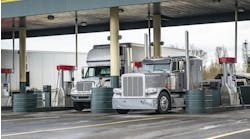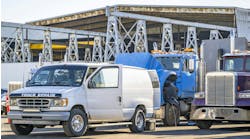One of the interesting things about the report we recently released on the intentional pairing of tractors and trailers was that it reminded me just how complicated and complex the movement of goods is.
In a perfect world each tractor would be paired with a trailer and both would be spec’d for maximum fuel efficiency, minimizing emissions, and improving profitability. But the dynamic nature of the trucking industry makes this impossible. While some fleets have dedicated consistent loads and routes, most do not.
Our report found that the majority of tractors pulling dry van and refrigerated 53-foot trailers operate in a drop and hook mode, keeping the tractor assets moving as much as feasible rather than waiting for trailers to be loaded or unloaded.
Ultimately what we found was that while intentional pairing of tractors and trailers is feasible, it is not realistic given the realities of today’s trucking market. Duh, many of you say, agreed. But there were some very interesting insights as we conducted our research. Read on…
However, new technology increases the feasibility and lowers the cost and complexity of matching/pairing. The evolution of the internet-of-things means real time asset management systems can have independent access to driver information, tractor characteristics, trailer characteristics, asset status and location, loads, routes, weather, etc.
We found that fleets would consider matching more tractor-trailer by models for savings, where a 5% to 10% net improvement in truck operating costs could be enough to interest fleets in changing operations to facilitate intentional pairing. However, the analysis needs to include factors such as net annual revenue miles, driver hours of service limits on mileage, customer retention, etc. in addition to trip MPG factors.
Intentional pairing shows potential for a few situations. For example, lightweight tractors paired to lightweight trailers can maximize payload in a tradeoff with service life and gradeability. See the upcoming RunonLessRegional beverages participant. Down-sped transmissions can be optimized for specific routes and loads. High power tractors can be focused on demanding mountain routes. Aerodynamically optimized units can be focused on higher speed routes where they obtain the best benefits versus non-aerodynamic ones.
While intentional pairing has the potential to benefit freight transport in certain specific circumstances, it represents a fundamental shift in the way the majority of fleets operate today. While I don’t expect to see fleets all of sudden move toward the intentional pairing of tractors and trailers, it was interesting to research the subject and be reminded of just how complicated the movement of freight really is. And even given this complexity we still are doing a pretty good job of improving our overall freight efficiency. Good job!




